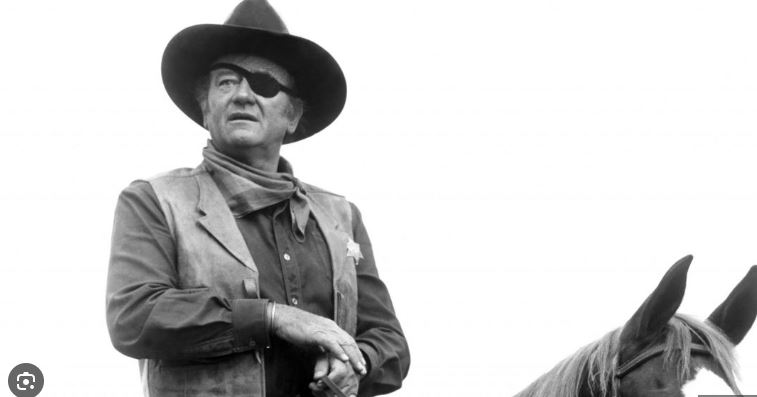We look at five distinctive hats worn by Western film icon John Wayne, from Stagecoach to The Man Who Shot Liberty Valance
John Wayne became such an iconic style icon across his Hollywood career thanks in part to a distinctive style that became replicated in every TV western that would follow.
From 1939’s Stagecoach, which saw Wayne make his cinematic debut, to 1969’s True Grit, for which the legend won his only Oscar, Wayne always struck an outline that stood out from the film and made him a larger-than-life movie star.
Just as iconic as Wayne are the hats that he wore in each film. Modern hatters field countless requests from rabid fans seeking their own version of their hero’s hat. From the tall, black hat Wayne wore as Rooster Cogburn to the dimpled, silverbelly lid from The Man Who Shot Liberty Valance (1962), lets take a look at what makes five John Wayne movie hats so iconic.
Stagecoach (1939)

John Wayne’s first Western role came in 1939’s Stagecoach, directed by John Ford, whom Wayne would collaborate with for future Westerns for many years. The film followed an eclectic cast of characters who boarded the titular stagecoach to take a dangerous journey across the American West. Wayne was cast in the supporting role of Ringo Kid, ultimately stealing the movie thanks to his calm, cool demeanor and an iconic look.
Wayne’s hat in the film is a character all its own. It’s silverbelly (a Western term for white) color, unique braided band, and devel-may-care styled crown make it stand out among hats worn by the other characters. The hat epitomizes the traditional “Boss of the Plains” style made famous by Stetson, including a wide, flat brim and an open crown. It was utilitarian and functional, a lot like Wayne. The most interesting part of this hat is its double band. One is a knotted leather band while the other is a simple leather throng that doubles as a chin strap.
True Grit (1969)

While Wayne donned mostly white hats throughout his iconic career — which helped establish him as the film’s hero (the good guy wears white, right?) — 1969’s True Grit saw him sport a black hat as rugged marshal Rooster Cogburn. Wayne’s lead is tasked with helping a young girl get revenge on the man that killed her father. It’s a dark, moralistic tale that is reflected in the hat choice for Wayne’s wardrobe.
True Grit continued Wayne’s hallmark of unique hat bands, again sporting a double band like he did in Stagecoach. Cogburn’s hat not only includes the black ribbon band that likely came with the hat, but also has a rough braided leather band tied off into a fringe-filled knot. It’s both stylish and symbolic — the rough exterior band covering the soft, put-together band symbolizes Cogburn’s own hardened exterior that masks his true feelings inside.
The hat seemed to resonate with critics, too — Wayne won his only Oscar for Best Actor for his performance in True Grit.
Rio Bravo (1959)

John Wayne saddled up for 1959’s Rio Bravo with a star-studded cast that included the likes of Dean Martin, Ricky Nelson and Angie Dickinson, among others. And it’s a film that resonated with a wide swath of viewers: a ragtag group defends a Western town from hired guns who hope to break their outlaw leader out of jail.
JT Chance — played superbly by Wayne — shines for all the right reasons, and Wayne’s wardrobe is no exception. His hat shifts from the more traditional open crown to a pinch front crown. It’s a laid back, slick style that separates Wayne’s rebel-rousing character from his earlier, more heroic parts like Stagecoach.
The Man Who Shot Liberty Valance (1962)

As one of the final films Wayne and director John Ford made together, 1962’s The Man Who Shot Liberty Valance is also one of the most unique. It’s a fitting end to a long, fruitful relationship between Wayne and Ford — the film deviates from the earlier plot-driven “movies” to a more thought-provoking and mature film.
It’s a film that does a lot of reflection, both in its themes (“When the legend becomes fact, print the legend”) and in its plot — Jimmy Stewart stars as an aging senator who reminisces about his role in killing an outlaw. And moviegoers are left with an enduring image of Wayne as Tom Doniphon, a friend of Stewart’s character who is also good with a gun.
In Liberty Valance, Wayne’s hat is a subtle nod to his original Stagecoach lid with its simple silverbelly design and thin, rawhide band, but with some nods to Wayne’s experience — the hat is well-worn and it’s broken in demeanor reflects back on the aging Western star and longtime director friend John Ford.
The Searchers (1956)

The Searchers (1956) is often attributed as Wayne’s greatest Western film, if not film altogether. Yet another entry into Wayne’s relationship with director John Ford, the film has a simple story — a Civil War veteran (played by Wayne) searches for his niece who has been captured by Native American warriors. But it’s the execution of the plot, and the themes it uncovers, that make The Searchers such an enduring film.
Ford’s visuals are credited with establishing that sweeping, beautiful yet complex and dangerous spectacle that is now commonplace in Westerns. And Wayne’s performance as vet Ethan Edwards is no exception. Wayne’s hat is a rough, black textured style typical of the genre, yet with a bound brim and thick, leather band. The hat is tough and gritty, both readymade for the perilous journey ahead and symbolic of Ethan’s tough-guy, take-no-bull personality.
